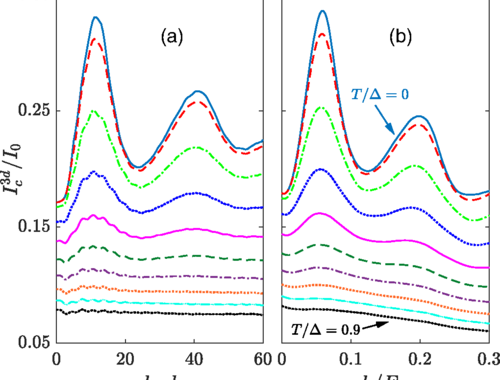
Josephson current through a ferromagnetic bilayer: Beyond the quasiclassical approximation
Authors: Hao Meng , Yajie Ren, Javier E. Villegas and A. I. Buzdin
Physical Review B. 100. 224514 (2019)
Abstract: Based on the Bogoliubov–de Gennes equations, we provide an exact numerical solution for the critical current of Josephson junctions with a composite ferromagnetic bilayer. We demonstrate that for the antiparallel orientation of the magnetic moments of the bilayer, the presence of a potential barrier at the bilayer interface results in large oscillations of the critical current as a function of ferromagnet thickness and/or exchange field. Because of this, and remarkably, in the range of small exchange field and thicknesses, the magnetism leads to the increase of the critical current. This effect is well pronounced at low temperature but disappears near Tc. If the potential barrier is replaced by a spin-active barrier at the bilayer interface the conventional 0-π transition, similar to the case of an uniform ferromagnetic Josephson junction, is observed. Strikingly, for a parallel orientation of the magnetic moments of the bilayer, the presence of the spin-active barrier restores the anomalous behavior—potential barrier in the antiparallel case. These behaviors result from the resonant tunneling of Cooper pairs across the composite barrier—an effect related to the spin-dependent Fermi vector in the presence of the ferromagnets’ exchange field.
